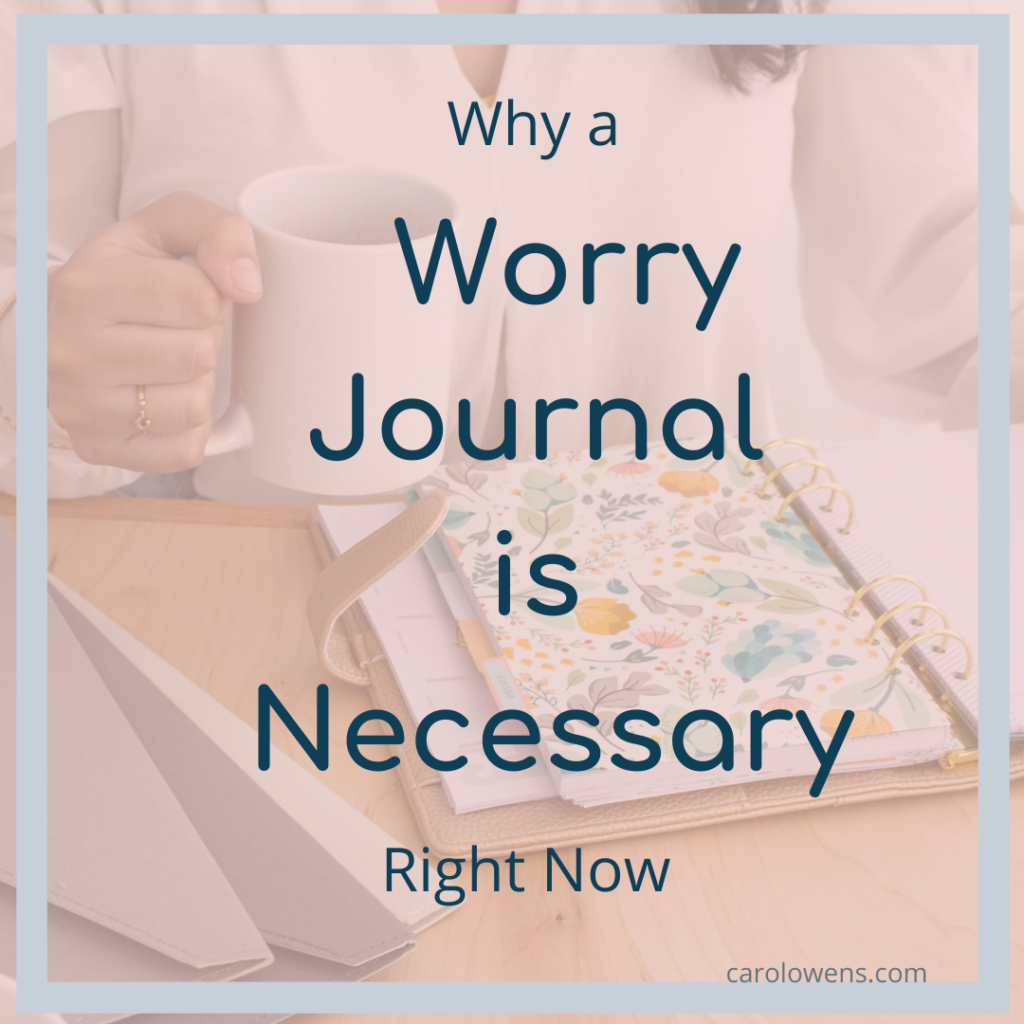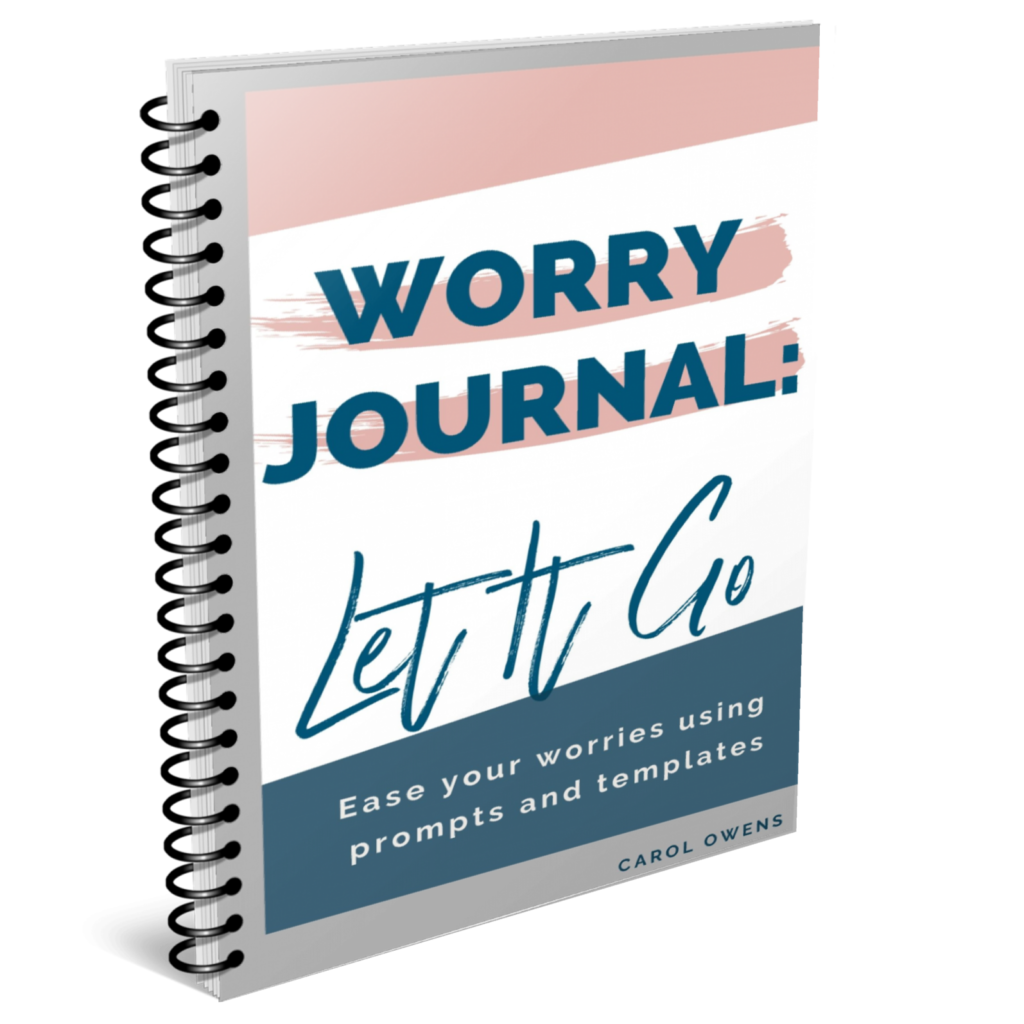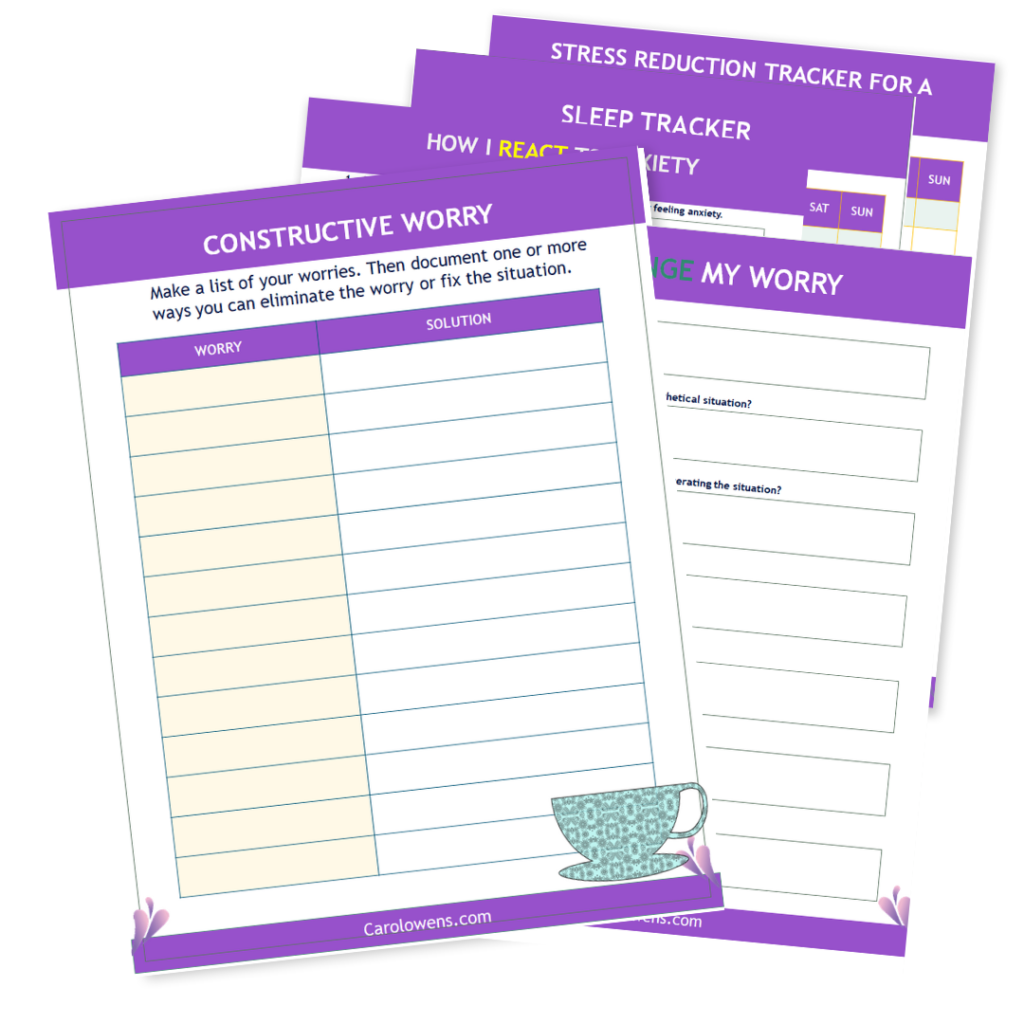Why a Worry Journal is Helpful Right Now
This is a time when the world is quickly changing. We are stressed, worried or concerned about our health, our lifestyle, our economy, our family and ourselves. It would be easy to fall into a state of constant worry. That’s why it’s more important than ever to take control of your worry. Using a worry journal helps do this.

We’d all love to live a worry-free life. However, the reality is that there’s always going to be something to worry about. And right now, with Covid-19 and job loss running high, it’s easy for worry to take control of our lives.
Whether it’s small everyday worries or more significant worries like financial difficulties, these worries can easily build up and become problematic to your health. I know my worries seemed to triple during this time.
I became the sole financial earner over the past year when my husband was furloughed. On top of that I became the teacher to my grandkids while their parents worked essential jobs. I had to figure out how to manage my time for teaching kids, taking care of client work, and paying the bills all while maintaining my home, cooking for everyone, and taking care of myself. The stress seemed to keep piling up.
I had to find a way to take control of my worries.
I began keeping a worry journal. It is the one thing I found that helped me contain my worries over what was happening or going to happen. I wrote in it each night before going to bed.
So, what is a worry journal and how does work? Below, you’ll discover everything you need to know about worry journals to help you decide whether or not keeping one would be beneficial to you.

What is a Worry Journal?
A worry journal is pretty much what its name suggests – a place you can write down all your worries. But, you ask, won’t this intensify your worries if you’re spending extra time focusing on them? While it’s logical to think this would be the case, it can actually help to reduce your worries when used correctly.
When you worry excessively, it often leads to feelings of anxiety, stress and depression. Often our worries impact our health and wellbeing when they are bottled up inside. Over time, as our worries build-up, they need to be released. This often results in burnout, alongside a range of mental and physical issues.
Worry journals can be an excellent tool for helping you control your worries and preventing long-term issues with your wellbeing.
How does it work?
Worry journals are really easy to start and maintain. While you can simply use them to jot down any worries that come into your mind, there are ways to get more out of them.
If you truly want your worry journal to work for you, you’re going to want to evaluate and challenge your worries. Learn more about the most effective method to follow when creating a worry journal below…
Writing your worries down
The first step is to begin by writing down all of the worries you currently have. When you write down each thing that is worrying you, you’ll automatically find it releases the power they have over you.
You’ll only need to spend a few minutes listing your worries to start to feel the benefits. Like some people, I’ve found this simple step is enough to reduce worries. However, you may find it beneficial to move onto the next step of evaluating them.

Evaluating your worries
Once you have your worries written down, you can start to really evaluate them. This means asking yourself a few questions to determine why you have these worries and what you’re actually worried will happen.
So, for example, it could be you’re worried you’ll become sick from the virus or lose your job. Write down why you have this worry and what you think will happen. It’s a good idea to write down the emotions you’re feeling because of the perceived problem.
By taking the time to evaluate your worries, you’ll gain a much better understanding of them. This will, in turn, help you with the final step of challenging your worries.
Challenging your worries
Once you have a greater understanding of your worries, you can work on reducing them. With a worry journal, you can challenge your worries by asking yourself a series of questions. These include:
• Is there any evidence to support my worries?
• What is the worst thing that could happen?
• Could I look at the situation in a different way?
• What evidence do I have that could argue against the worry?
These are just some of the useful questions which can help you to determine whether the worry is necessary. Often, when it comes to challenging them, we realize our worries aren’t as bad as we perceived them to be.
If you follow the method above, you’ll be surprised by how much better you feel. A worry journal is a very simple, yet very effective tool for reducing anxiety and preventing excessive worry.
I’ve seen remarkable results in my own life. I’m calmer and more prepared for unexpected events. How have you been dealing with worries? Why not get my set of free templates to begin taking control of your own worries. Just leave your name and email address and I’ll get them right over to you.


